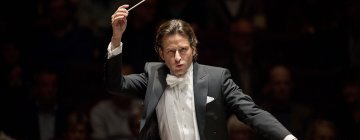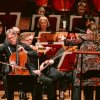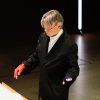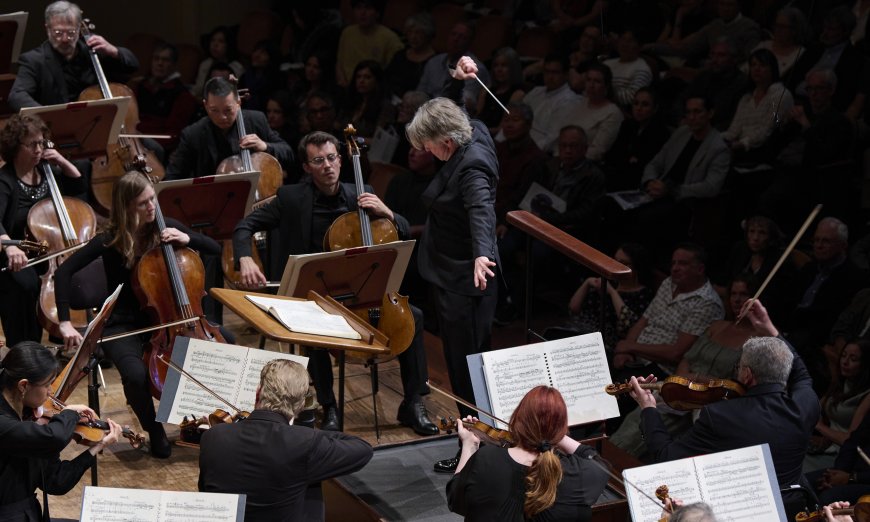
Esa-Pekka Salonen and the musicians of the San Francisco Symphony are making the most of their remaining concerts together.
That much was clear on Friday, May 23, at Davies Symphony Hall, as the outgoing music director led the first in a monthlong series of performances marking the end of his tenure with the orchestra.
The weekend’s program, which repeats through Sunday, May 25, is anchored by a dramatic but nuanced reading of Igor Stravinsky’s The Firebird and highlighted by soloist Isabelle Faust’s beautiful and well-characterized playing in Alban Berg’s Violin Concerto.
Like he did in 2022 performances with the Symphony, Salonen has elected to present Stravinsky’s complete ballet score, rather than the popular suite from 1919 that cuts about 25 minutes of music. This decision means scenic moments that require inventiveness to pull off in concert feature alongside musical highlights.
On Friday, these extended scenes crackled with energy and purpose, driven by Salonen’s vivid dramatic imagination. The performance brilliantly elucidated the work’s overall structure, with the conductor masterfully restraining even the fully orchestrated moments. This careful pacing built tension until the inevitable climax in the “Infernal Dance,” which the musicians delivered with maximum ferocity.
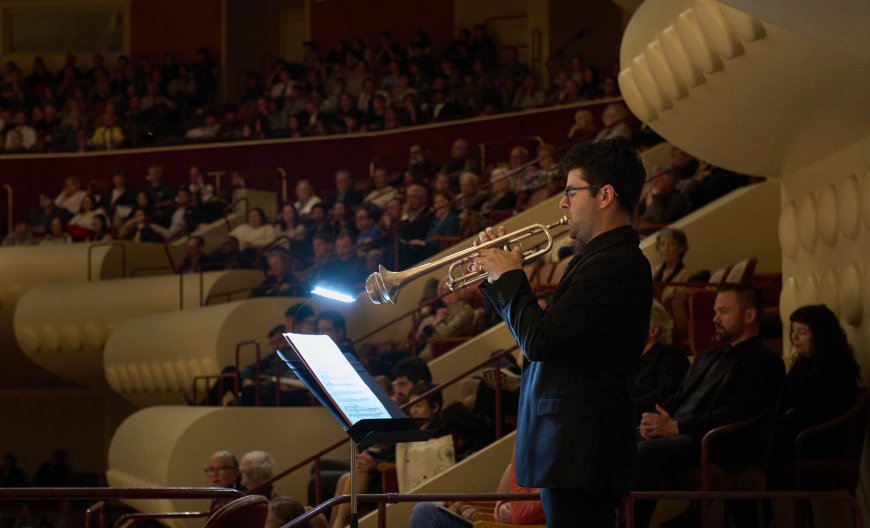
Although interpretations generally adhere to Stravinsky’s plentiful metronome markings, Salonen pushed the tempo at the acceleration into the fast coda of the dance, adding to the excitement. Alternatively, in the finale, he slowed the tempo down to the specified molto pesante (very heavy) but held the last chord for almost a full 10 seconds as the orchestra built the sound in a finely graded crescendo.
In the concert’s first half, Salonen conducted the first Symphony performance of Chorale, a 2002 work by his longtime friend and fellow Finnish composer Magnus Lindberg, who conceived the piece as an intro to Berg’s Violin Concerto. It takes off from the same J.S. Bach chorale harmonization that Berg used, but Lindberg reimagines it with a dense and intricate orchestration style that is characteristic of his work.
Salonen imparted refinement to a score that could easily suffer from being overplayed by a less attentive conductor. The orchestra handled the incredibly difficult runs in the woodwinds and strings with utmost clarity. The work concludes with a beautiful if unconventional cadence to a sustained major chord, anticipating exactly the manner in which Berg ends his piece.
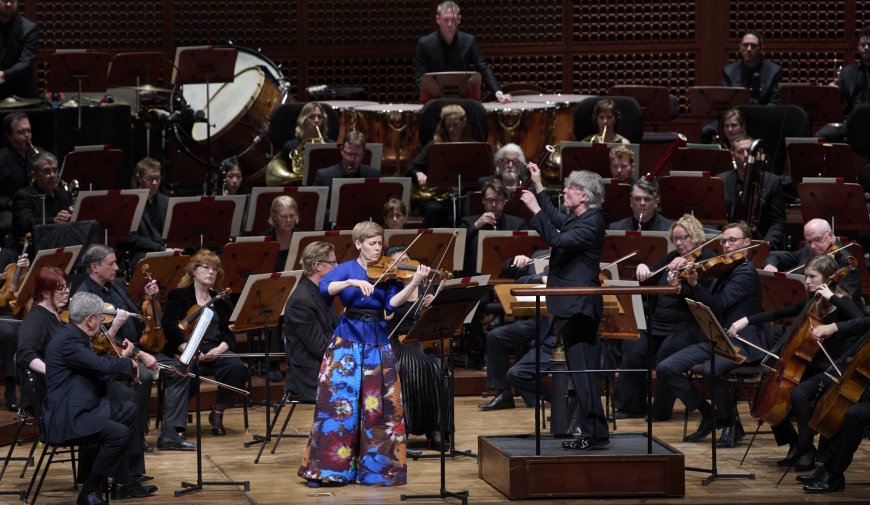
The Austrian composer’s 1935 concerto demands a soloist like Faust, who was all in on characterizing the musical material and sharing it, rather than seizing control and showing off. The piece is a portrait of Manon Gropius, who died at 18; she was the daughter of architect Walter Gropius and Alma Mahler Werfel (composer Gustav Mahler’s widow). In a performance as good as Friday night’s, the music captures the moods and manners of the girl so vividly that a listener can almost see her.
The passionate but highly contrasting first movement played to Faust’s strengths. From the opening arpeggios, rendered almost shyly and with minimal vibrato, she deployed a variety of tone and phrasing that Salonen and the orchestra only amplified. This performance had exquisite balance and clarity, with even the forceful brass-heavy moments making their point without going over the top.
The second movement opens wildly but shifts in the middle to a set of variations on the Bach chorale “Es ist genug” (It is enough). Though mainly quiet, this is the emotional center of the piece, played here with extraordinary intensity.
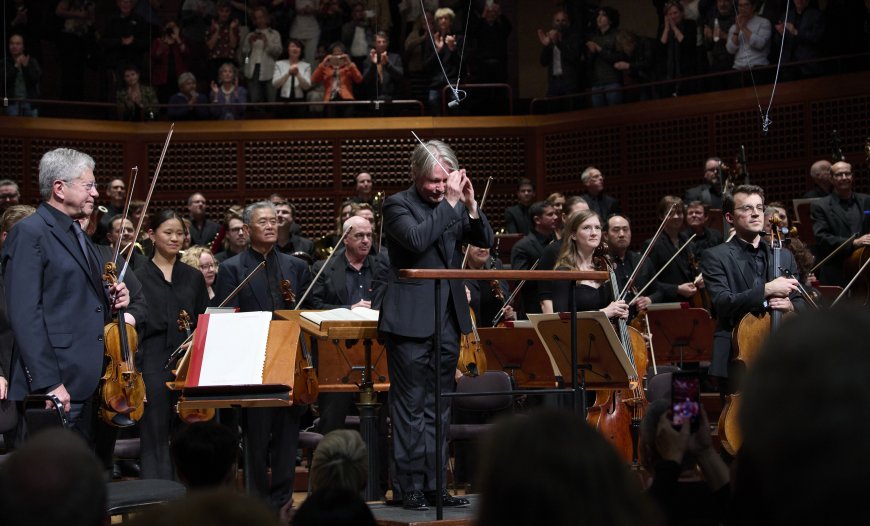
Toward the end, concertmaster Alexander Barantschik took up the theme and then handed it off seamlessly to Faust, who extended the melody into her instrument’s upper reaches as the orchestra sank down to a cadence. It was a breathtaking way to take leave of Berg’s masterpiece.
As is his custom when acknowledging applause, Salonen joined the first row of violins, rather than standing in front of them. But during Friday’s encore bow, the orchestra didn’t stand as requested, giving him the solo moment he had tried to dodge. He seemed a bit surprised, but he shouldn’t have been. The Symphony musicians know how special this time with Salonen has been, and they’re marking the end of an era in the best way they can.
Up next, Salonen partners with violinist Hilary Hahn in concerts May 29 – June 1, followed by the conductor leading Jean Sibelius’s Symphony No. 7 June 6–8.
His grand finale will be conducting Gustav Mahler’s Symphony No. 2 June 12–14.
This story was first published in Datebook in partnership with the San Francisco Chronicle.
